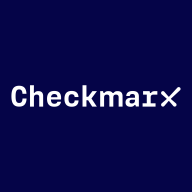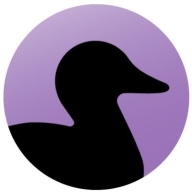

Checkmarx One and Coverity Static are contenders in the static application security testing tools category. Checkmarx One takes the lead with its comprehensive scanning features and user-friendly interface, whereas Coverity Static excels in integration and deep analysis capabilities.
Features: Checkmarx One offers comprehensive scanning of uncompiled code with flexible repo integrations and wide language support. It effectively pinpoints vulnerabilities and provides graphical views of issues. Coverity Static is known for deep application analysis, memory management, and static order analysis, providing robust bug detection and management for complex codes.
Room for Improvement: Checkmarx One could improve by reducing false positives, expanding supported languages, and enhancing API functions. Its pricing model and integration options need refinement. Coverity Static needs a better UI/UX, more IDE integrations, and should address its pricing based on user count as a drawback.
Ease of Deployment and Customer Service: Checkmarx One supports flexible deployment in private, public, and hybrid clouds with commendable customer service and fast response times. Coverity Static offers solid customer support but has slower implementation cycles despite its reliable reputation.
Pricing and ROI: Checkmarx One's complex licensing makes it expensive but justified by its security features, while Coverity Static's user-count-based pricing may become costly for larger teams. Both tools provide good ROI through enhanced security and speedier development, though Checkmarx's flexible licensing could improve transparency, and Coverity's cost remains a concern for smaller firms.
| Product | Market Share (%) |
|---|---|
| Checkmarx One | 10.0% |
| Coverity Static | 6.0% |
| Other | 84.0% |


| Company Size | Count |
|---|---|
| Small Business | 30 |
| Midsize Enterprise | 9 |
| Large Enterprise | 38 |
| Company Size | Count |
|---|---|
| Small Business | 8 |
| Midsize Enterprise | 6 |
| Large Enterprise | 31 |
Checkmarx One is an enterprise cloud-native application security platform focused on providing cross-tool, correlated results to help AppSec and developer teams prioritize where to focus time and resources.
Checkmarx One offers comprehensive application scanning across the SDLC:
Checkmarx One provides everything you need to secure application development from the first line of code through deployment and runtime in the cloud. With an ever-evolving set of AppSec engines, correlation and prioritization features, and AI capabilities, Checkmarx One helps consolidate expanding lists of AppSec tools and make better sense of results. Its capabilities are designed to provide an improved developer experience to build trust with development teams and ensure the success of your AppSec program investment.
Coverity gives you the speed, ease of use, accuracy, industry standards compliance, and scalability that you need to develop high-quality, secure applications. Coverity identifies critical software quality defects and security vulnerabilities in code as it’s written, early in the development process, when it’s least costly and easiest to fix. With the Code Sight integrated development environment (IDE) plugin, developers get accurate analysis in seconds in their IDE as they code. Precise actionable remediation advice and context-specific eLearning help your developers understand how to fix their prioritized issues quickly, without having to become security experts.
Coverity seamlessly integrates automated security testing into your CI/CD pipelines and supports your existing development tools and workflows. Choose where and how to do your development: on-premises or in the cloud with the Polaris Software Integrity Platform (SaaS), a highly scalable, cloud-based application security platform. Coverity supports more than 20 languages and 200 frameworks and templates.
We monitor all Static Application Security Testing (SAST) reviews to prevent fraudulent reviews and keep review quality high. We do not post reviews by company employees or direct competitors. We validate each review for authenticity via cross-reference with LinkedIn, and personal follow-up with the reviewer when necessary.